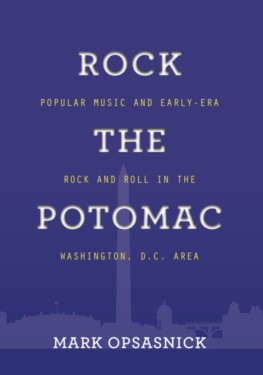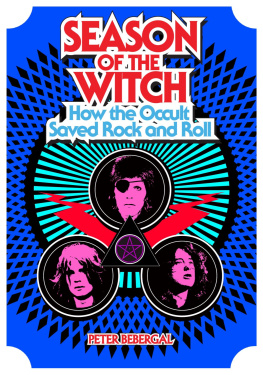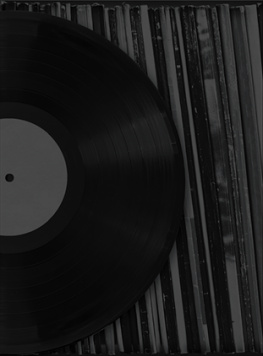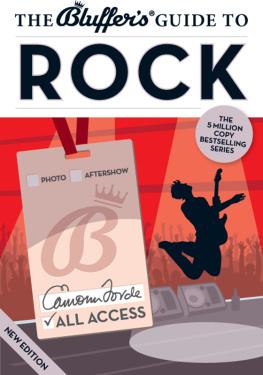BOOKS BY MARK OPSASNICK
CAPITOL ROCK
WASHINGTON ROCK AND ROLL
MISCELLANEOUS AND UNKNOWN
THE CULTURAL BADLANDS TOUR
THE MARYLAND BIGFOOT DIGEST
THE LIZARD KING WAS HERE
THE REAL STORY BEHIND THE EXORCIST
Copyright 2019 Mark Opsasnick
PRINT ISBN: 9781644382837
EBOOK ISBN: 9781644382844
All rights reserved. No part of this publication may be reproduced, stored in a retrieval system, or transmitted in any form or by any means, electronic, mechanical, recording or otherwise, without the prior written permission of the author.
Published by BookLocker.com, Inc., St. Petersburg, Florida.
First Edition
DEDICATION
To the fans of Washington, D.C. area popular music
CONTENTS
CHAPTER TWENTY-ONE HOTEL LOUNGES AND ROOMS OF
THE SWING ERA
CHAPTER TWENTY-TWO THE FIRST FEMALE POP STARS OF THE
NATIONS CAPITAL
CHAPTER TWENTY-SIX WASHINGTONS ONLY THEATRE RESTAURANT:
THE CASINO ROYAL THEATRE RESTAURANT
CHAPTER TWENTY-SEVEN AT THE PEACE CROSS THE PLACE TO BE:
THE CROSS ROADS
CHAPTER TWENTY-EIGHT SHOWPLACE OF STARS: THE BLUE
MIRROR CLUB
CHAPTER THIRTY-TWO D.C.S LARGEST HILLBILLY NIGHT CLUB:
THE DIXIE PIG
CHAPTER FORTY-THREE A LITTLE BIT OF TOWN AND AN AWFUL LOT
OF COUNTRY
CHAPTER FIFTY-FIVE COFFEE, CONFUSION AND THE BEATNIKS OF
WASHINGTON
CHAPTER SEVENTY-NINE THE CULTURAL TRANSFORMATION OF
DUPONT CIRCLE
CHAPTER EIGHTY-FOUR MONUMENTS OF THE LOCAL ROCK AND
ROLL SCENE
CHAPTER EIGHTY-FIVE JOURNEY TO THE CENTERS OF THE TEEN
DANCE SCENE
PART TWO EARLY-ERA ROCK AND ROLL: A SELECTION OF NIGHT CLUBS,
STAGES AND FESTIVALS
INTRODUCTION
Rock and roll emerged in America during the early 1950s as a new, intriguing and controversial form of popular music. By that point in time the general media, taking its lead from a magazine called the Billboard and other trade publications that covered the entertainment industry, had divided all of popular music into three basic classifications: pop; country & western; and rhythm & blues. Each of these different musical styles had its own unique lineage dating back centuries. Pop, it was argued, could be traced back to the sounds created by earliest man in the prehistoric age, though for practical purposes most scholars marked its beginnings with the violin bands and orchestras of 16 th century Italy; country & western is believed to have evolved from traditional Gaelic singing of 9 th century Kingdom of Scotland (later mixing with fiddle-fueled Scottish folk songs during the 17 th century); and rhythm & blues had its origins in the shouts, chants and work songs of African slaves who labored on the plantations of Virginia and Maryland during Colonial times. Elements from all three of these musical forms were acquisitioned by the earliest rock and roll performers, resulting in the emergence of an unstructured type of music that could take on almost any manner and still retain its own unique character.
Shortly after its inception, rock and roll music gained momentum across America, initially being offered as a live entertainment option in night clubs, restaurants, auditoriums and similar establishments. During the early 1950s this music drew a youthful audience, gained widespread recognition as the unofficial sound of the city, and thrived as a specialized art form as regional music scenes grew in size and evolved in scope. The Washington, D.C. area, with a long history as a center of popular music, emerged as a hotbed of rock and roll talent, though many of the regions most talented musicians eventually felt compelled to leave the nations capital to seek band jobs and recording opportunities in other locations such as Los Angeles and New York City. While numerous musicians found grander venues in which to play, many more stayed behind and in time achieved lofty status as legendary rock and rollers in their own backyard.
Rock the Potomac will transport readers through time and space as it studies eras that are vital to understanding how popular music evolved in the Washington, D.C. area and advanced the development of a rock and roll scene that has persevered through time. The book was created to serve as an educational tool, a reference source and an item of entertainment for anyone interested in the history of Washington, D.C. area popular music. It examines the areas musical past and commemorates the corresponding players, sounds, night clubs, landmarks and social movements that have defined the regions popular music scene and its colorful history.
MARK OPSASNICK
Greenbelt, Maryland
September 2018
PART ONE
CHAPTER ONE
BILLBOARD:
ESTABLISHING CLASSIFICATIONS OF MUSIC
(*Authors Note: For this book, one of the primary sources for musical classification is the publication currently entitled Billboard. For decades this periodical has offered popular music charts that provide specific names for each style of music being surveyed. Through time the names of these musical styles have been appropriated from Billboard and used in practice by those working within the music industry and the popular media. For these reasons, and to ensure clarity when discussing different musical styles in this text, this work will begin with a chapter on Billboard magazine. In addition, for purposes of brevity and simplicity, when discussing classifications of music in this text, country & western will be commonly referred to as C&W and rhythm & blues will be commonly referred to as R&B.)
In the late 19 th century, as the number of circulating newspapers and publications grew, the media was increasingly called upon to publicize all manner of popular music. An American music trade publication entitled Billboard Advertising was created and contributed to the growth and prosperity of the industry by providing advertisements, articles and reviews that contained detailed information on musical bands and performers, their recorded work and the nationwide venues in which they performed.
As the commercial popularity of disc records increased with each passing year, it became necessary for the entertainment industry to establish some sort of system that would separate and categorize the various types of music that were being made available to the public. Basically, informal classifications emerged that gave definition to distinct types of music providing descriptive categories from which record consumers could choose from. Though informal in nature, these classifications gained wider public recognition and acceptance with the advent of the Billboard charts in the 1930s, a unique offering that rated the popularity of different types of popular music based on radio play and music store sales. (The Billboard charts remain an important component of music promotion, evaluation and consumption to this day.)
The inaugural edition of Billboard Advertising appeared on Thursday, November 1, 1894 and its opening page stated the publication was devoted to the interests of advertisers, poster printers, bill posters, advertising agents and secretaries of fairs. The magazine was published by William H. Donaldson and James H. Hennegan out of Cincinnati, Ohio and in February 1897 its moniker was shortened from Billboard Advertising to The Billboard. With the Monday, January 9, 1961 issue, the publication was retitled Billboard Music Week. In the Saturday, January 5, 1963 issue the name was shortened to Billboard and that moniker has been retained to the present day.











